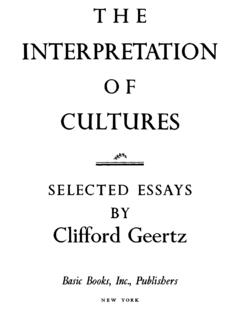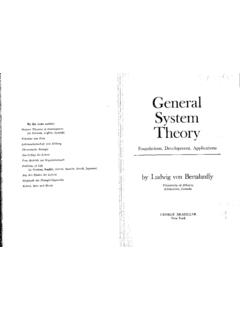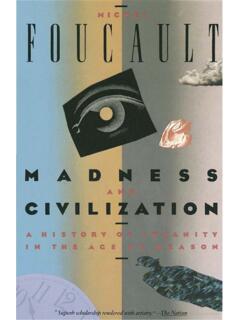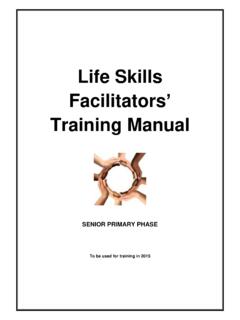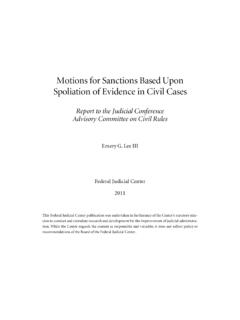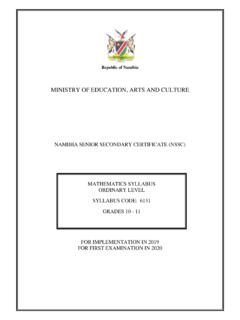Transcription of Caliban and the Witch: Women, the Body and Primitive ...
1 C a lib a n a n d th e W itc h Silvia Federici A u to n o r n e d ia Acknowledgements To the many witches I have met in the Women's Movement, and to the other witches whose stories have accompanied me for more than twenty-five years, nevertheless leaving an inexhaustible desire to tell, to let people know,to make sure that they will not be forgotten. To our brother Jonathan Cohen whose love, courage and uncompromising resistance to injustice have helped me not lose faith in the possibility o f chang . ing the world and in men's ability to make the struggle for women's liberation their own. To the people who have helped me to produce this volume.
2 I thank George Caffentzis with whom I have discussed every aspect o f this book; Mitchel Cohen for his excdlent comments, his editing o f parts o f the manuscript, and his enthusiastic support for tlis project; Ousscina Alidou and Maria Sari for introducing me to the work o f Maryse Conde; Ferruccio Gambino for mak . ing me aware o f the existence o f slavery in 16'h- and 17th-century Italy; David Goldstein for the materials he has given me on the witches' pharmakopeia'';. Conrad Herold, for contributing to my research on witch hunting in Peru;. Massimo de Angelis, for giving me his writings on prinutive accumulation and for the important debate on th s topic which he organized in TIte Commoner.
3 Willy Murunga for the materials he has given me on the legal aspects o f witch . craft in East Africa. I thank Michaela Brennan and VeenaVisW2 natha for read . ing die manuscript and giving me advice and support. I dso thank Mariarosa DaUa Costa, Nicholas Faraclas, Leopolda Fortunati, Everet Green, Peter Linebaugh, Bene Madunagu, Maria M,ies, Ariel Salleh, Hakim Bey. Their works have been a reference point for the perspective that shapes Caliban and the Witch, though they may not agree with all that I have written here. Special thanks to Jim Fleming, Sue Ann Harkey, Ben Meyers and Erika Biddle, who have given many hours o f their time to this book and, with their patience and assistance, have given me the possibility o f finishing it, despite my endless procrastination.
4 New York, April 2004. Autonomedia POB 568 Willianwburgh Smion, Brooklyn, 11211-0568 USA. Text anti-copyright @ 2004 Silvia Federici This text may be freely reproduced for non-conunercial purposes. Please inform the author and publisher at the address above o f any such use. Designed by Sue Ann Harkey Fitst edition, printing, 2^W. ISBN 1-57027-059-7. Printed in the United States of America Table o f Contents Preface 7. Introduction 11. All the W orld Needs a Jolt 21. S o c i a l M o v e m e n t s a n d P o li t ic a l C ris is in M e d i e v a l E u r o p e The Accum ulation of Labor and the Degradation of Women 61.
5 C o n str u c tin g D iffe r e n c e " in th e " T ra n sitio n t o C a p ita lis m ". The Great Caliban 133. T h e S tr u g g le A g a in s t th e R e b e l B o d y The Great W itch-Hunt in Europe 163. Colonization and Christianization 219. C a li b a n a n d W it c h e s in th e N e w W o r ld Index 2 4 4. Im age sources 271. B ibliography 272. Woodcut ofiv;tches wjuring ti sh^oWtr o f min. In Ulrich Molitor, D e " 7 PnHONicts MuuERlBUSs (a ., Ftmalt S o " " " " S o t l ^ ^ ) (1489). Preface Caliban and the Witch presents the main themes o f a research project on women in the traiuition from feudalism to capitalism that I began in the Iiid -1 9 7 0 s, in collaboration with an Italian fenunist, Leopoldina Fortunati.
6 Its first result; appeared in a hook that we published in Italy in 1984: II Grande Calibaiio. Storial del (orpo social ribelle iiella prima ja se del capitale (M ilano: Franco Angeli) [11ie Great Caliban . History o j the R ebel Body ill the First Phase o f Capitalism]. M y interest in t t i l research originally motivated by the debates that accompa . nied the development o f the Feminut Movement in the U nited States concerning the roots o f women's oppression, and the political strategies which the movement should adopt in the struggle for women's the time, the leading theoretical and polit . ical perspectives from which the reality o f sexual discrimination was analyzed were those proposed by the two i i i n branches o f the women's movement: die Radical Feminists and the Socialist Femiiusts In my view, however, neither provided a satisfactory explana.)
7 Tion o f the roots o f the social and econom ic exploitation o f women. I objected to the Radical Feminists because o f their tendency to account for sexual discrimination and patriarchal rule on the basis o f trriuhistorical cultural structures, presumably operating independendy o f relations o f production and class. Socialist Feminists, by contrast, recog . nized that the history o f women cannot be separated fiom the history o f specific systems o f exploitation and, in their analyses, gave priority to women as workers in capitalist soci . ety But the limit o f their position, in my understanding o f it at the time, that it failed to acknowledge the sphere o f reproduction as a source o f value-creation and exploita.
8 Tion, and thus traced the roots o f the power ^difrential between women and men to women's exclusion from capitalist development a stand which again com pelled us to rely on cultural schemes to account for the survival o f sexism within the universe o f cap . italist relations. It in trus context that the idea o f tracing the history o f women in die traisi- tion from feudaism to capitalism took form .T h e thesis which inspired this research was first articulated by Mariarosa Dalla Costa and Selma J a i e s , as well as other activists in the Wages For Housework M ovem ent, in a set o f documents that in the 1970s were very controversial, but eventually reshaped the discourse on women, reproduction, and capi.
9 Talism. T h e most influential among them were Mariarosa Dalla Costa's Women and the Subversion o f the Community (1971). and Sebna Jam es' Sex, Race and Class (1975). Preface Against the Marxist orthodoxy, w luch explained women's oppression and sub . ordination to men as a residuum o f feudal relations, Dalla Costa and Jam es argued that the exploitation o f women has played a central function in the process o f capitalist accumulation, insofar as women have been the producers and reproducers o f the most essential capitalist c o m io d ity : labor-pow er. As Dalla Costa put it, women's unpaid labor in the hom e has been the pillar upon w hich the exploitation o f the waged w ork- ers, wage slavery has been built, and the secret o f its productivity (1972:31).
10 Thus, the power differential betw een women and men in capitalist societry cannot be attributed to the irrelevance o f housework for capitalist accumulation an irrelevance belied by the strict rules that have governed women's lives nor to the survival o f timeless cul . tural schemes. R ather, it should be interpreted as the effect o f a social system o f pro . duction that does not recognize the production and reproduction o f the worker as a social-econom ic activity, and a source o f capital accumulation, but mystifies it instead as a natural resource or a personal service, while profiting from the wageless conclition o f the labor involved.




